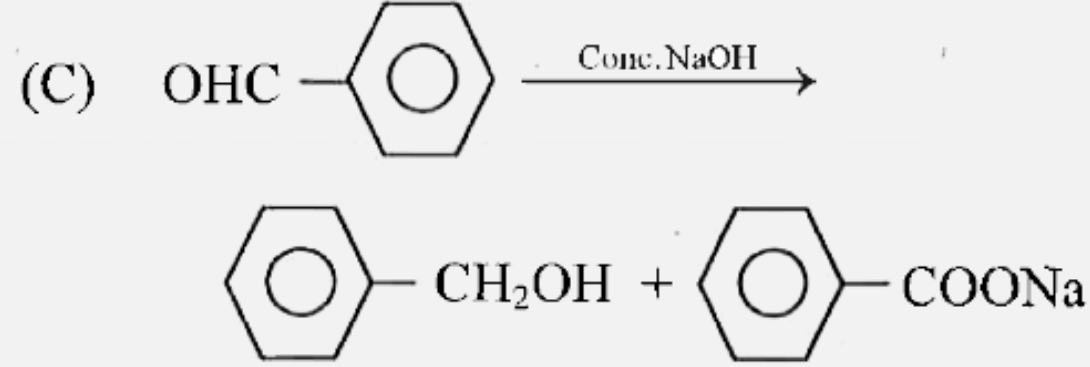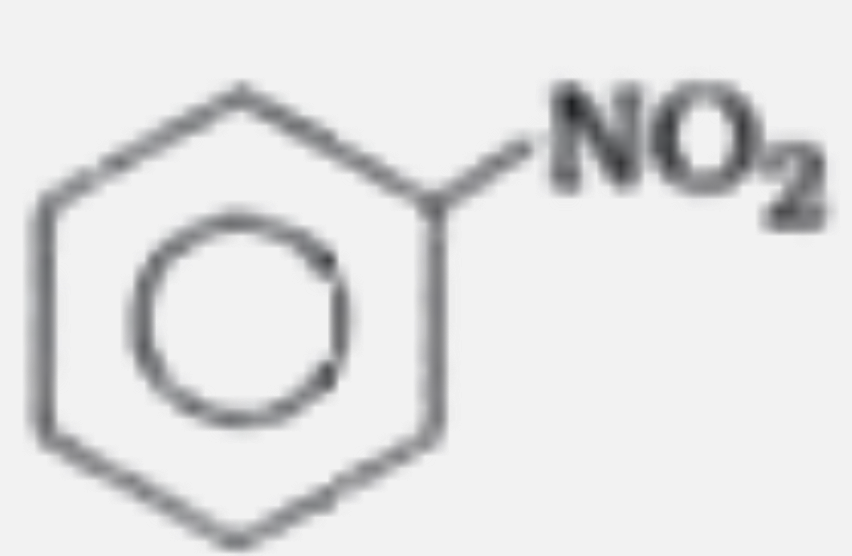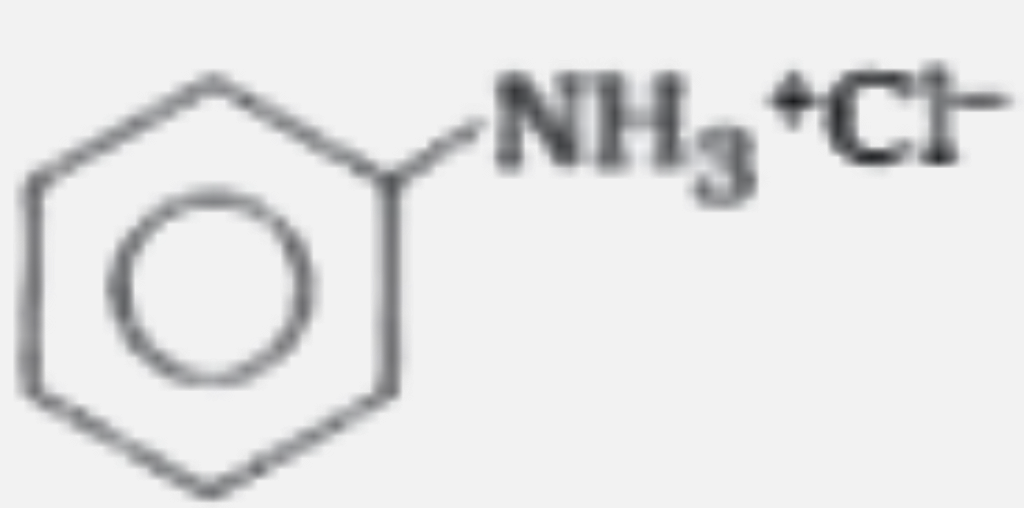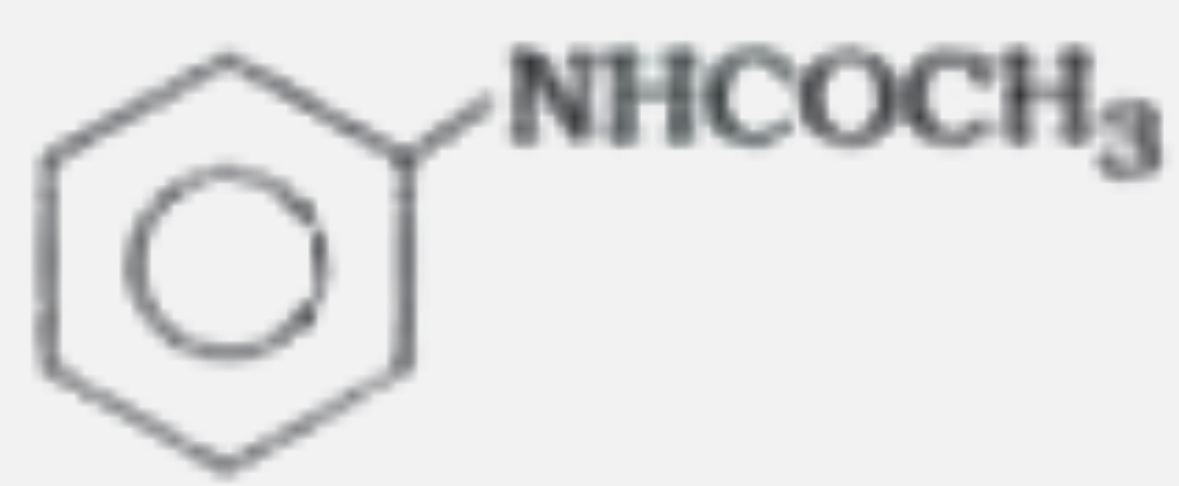Explore topic-wise InterviewSolutions in .
This section includes InterviewSolutions, each offering curated multiple-choice questions to sharpen your knowledge and support exam preparation. Choose a topic below to get started.
| 22701. |
When a liquid is heated its vapour pressure |
|
Answer» continuously INCREASES |
|
| 22702. |
The spontaneous flow of heat is always |
|
Answer» From LOW to HIGH pressure |
|
| 22704. |
Which of the following aqueous solution has the higherst boiling point ? |
|
Answer» `"0.1 M KNO"_(3)` |
|
| 22705. |
The value of K_f for water is 1.86 calculated from glucose solution . The value of K_f for water calculated for NaCl solution will be : |
| Answer» Answer :A | |
| 22706. |
Which will make basic buffer? |
|
Answer» `50 ML` of `0.1M" "NaOH+25mL` of `0.1M" "CH_3 COOH` |
|
| 22707. |
Which of the following compounds have 10 isomers- |
|
Answer» `Cl_2C_6H_3NH_2` |
|
| 22708. |
The reagents like AgNO_(3),K_(4)[Fe(CN)_(6)],KCNS,KI,K_(2)CrO_(4) Nessler's ect, find extenstive and very important applicasionin quentitative analysis because these resgents form different type of produce with different cation for axample KI form yellow precipitate with Pb^(2+) but at form red iprecipitate with Hg^(2+) , Hence these reagents are widelyused in the quantitative amalysis of morgenic salts Which of the following hydroxide does not dissolve in ammounts solutionbut sisolves in sodiumhydroxide ? |
|
Answer» `ZN(OH)_(2)` (B) `Cd(OH)_(2)` dissolves in ammonic but does not disolve in `NaOH` (c ) `Cu(OH)_(2) + NH_(3) rarr [Cu(NH_(3))_(4)]^(2+)`, which is a soluble complax butdoes notdissolve in `NaOH`. (d) `AI(OH)_(3) + OH^(Theta) rarr [AI(OH)_(4)]^(Theta)`.Which is a soluble complaxbut does not dissolve in `NH_(3)`. |
|
| 22709. |
Which of the following cation forms inner orbital octahedral complex with NH_(3) ? |
|
Answer» `Ni^(2+)` |
|
| 22710. |
The reagents like AgNO_(3),K_(4)[fe(CN)_(6)],KCNS,KI,K_(2)CrO_(4) Nessler's ect, find extenstive and very important applicasionin quentitative analysis because these resgents form different type of produce with different cation for axample KI form yellow precipitate with Pb^(2+) but at form red iprecipitate with Hg^(2+) , Hence these reagents are widelyused in the quantitative amalysis of morgenic salts Which of the following cation (i.e. basic radicals) forms coloured (not white) percipitates with aqueous solution ofpotassium indide the precipitete does notdissolveis exiess og reagent? |
|
Answer» `Hg^(2+)` `HgI_(2) + 21^(Theta) rarr [HgI_(4)]^(2-)` (soluble complax) (b).`Hg_(2)^(2+) + 2I^(Theta) rarr Hg_(2)I_(2) darr` (green) `Hg_(2)I_(2) + 21^(Theta) rarr [HgI_(4)]^(2-) + Hg darr` (BLACK). (c). `Bi^(3+) + 3I^(Theta) rarr BIi_(3) darr` (black) `BiI_(3) darr + 1^(Theta)[BiI_(4)]^(Theta)` (orange colour soluble complex) (d).`2Cu^(2+) + 5I^(Theta) rarr 2CuI darr (white) + 1_(3)^(Theta)` |
|
| 22711. |
The reagents like AgNO_(3),K_(4)[Fe(CN)_(6)],KCNS,KI,K_(2)CrO_(4) Nessler's ect, find extenstive and very important applicasionin quentitative analysis because these resgents form different type of produce with different cation for axample KI form yellow precipitate with Pb^(2+) but at form red iprecipitate with Hg^(2+) , Hence these reagents are widelyused in the quantitative amalysis of morgenic salts Which of the following is not currectly matched ? |
|
Answer» `Ag^(o+) + S_(2)O_(3)^(2-) rarr `WHITE ppt. B. `Pb_((aq))^(2+)+ 2CI_ (aq)^(Theta) rarr PbCI_(2)` c. `BiI_(1) darr ("black precipitate") + H_(2)O overset(Delta) to underset(("Orange"))(BIOI darr)` d. `Ca^(2+) + 2K^(o+) + [Fe(CN)_(6)]^(4-) rarr underset(("White"))(K_(2)Ca[Fe(CN)_(6)) darr)` |
|
| 22712. |
Which of the following is incorrect for 17 gm/L of H_(2)O_(2) solution. |
|
Answer» Volume strength is 5.6 V =0.5M volume strenght =11.2xxM =11.2xx0.5=5.6 so 1 ml solution gives 5.6 ml `O_(2)` at 273K `& 1atm` =2.8 ml `O_(2)` at 273 and 2 atm |
|
| 22713. |
Which of the following polymers of glucose is stored by animals? |
|
Answer» Cellulose |
|
| 22714. |
Which is the weakest acid in the following : |
|
Answer» `CH_(3)OH` |
|
| 22715. |
Which is the hottest part of the flame? |
|
Answer» BLUE zone |
|
| 22716. |
Which of the chelating ligands maintain hapticity equal to denticity ? |
|
Answer» `eta^(5)-C_(5)H_(5)` |
|
| 22717. |
Which one is more acidic ? |
|
Answer» `Al_2O_3` |
|
| 22718. |
What reaction is used for converting a primary amide into a primary amine containing one carbon atom less than the parent amide ? |
Answer» SOLUTION :Hofmann-bromamide REACTION, e.g., 
|
|
| 22719. |
What are the steps involved in the extraction of aluminium from bauxite? |
|
Answer» Solution :Aluminium is usually EXTRACTED from bauxite, `Al_(2)O_(3),2H_(2)O`. The extraction involves the following steps: (1) Purification (or concentration) of bauxite ore : (a) Baeyer's process : Red variety of bauxite containing iron oxide as the main impurity is purified by Baeyer's process. (b) Hall's process (Dry process) : Red bauxite is purified also by this method. (c) Serpeck's process : Bauxite ore containing silica as the chief impurity is purified by this process. Generally Hall's process is widely used for the purification of bauxite by fusing at high TEMPERATURE with `Na_(2)CO_(3)` in the presence of little lime, wvhen alumina, `Al_(2),O_(3)`dissolveformingsolubesodiumaluminate `NaAlO_(2)` .The filtrate of `NaAlO_(2)`is HEATED to 323-373k anda stram of `CO_(2)`is passedwhen `Al(OH_(3))` is precipitated. `Al(OH_(3))` pprecipitated is filtered, washed and ignited at 1473 K to obtain pure alumina, `Al_(2)O_(3)`. `underset("Bauxite")(Al_(2)O_(3)).2H_(2)O + Na_(2)CO_(3) overset(Delta)to2NaAlO_(2) + CO_(2) = 2H_(2)O` `2NaAlO_(2) + 3H_(2) O + CO_(2)overset(323 - 373 k) tounderset(ppt)(2Al)(OH)_(3) + Na_(2)CO_(3)` `2Al(OH)_(3) overset(1473k)to underset("pure alumina")(Al_(2)O_(3)) + 3H_(2)O` (2)Electrolysis of fused alumina (Hall and Heroult's process) : Purified alumina is dissolved in molten synthetic cryolite, `Na_(3)AlF_(6)`, and fused mixture is electrolysed with carbon electrodes. The molten electrolyte is covered with a layer of powdered coke to prevent the oxidation and loss of heat by radiation.  (3) Reactionsof electrolysis : `Na_(3)AIF_(6(l)) hArr 3NaF_((1)) + AIF_(3(1))` `AIF_(3(I)) hArr Al^(3+) + 3F^(-)` At cathode `: Al^(3+) + 3e^(-) to Al ""("reduce")` At anode `F^(-) to F + e^(-) ""(2F to F_(2(g)))` LIBERATED `F_(2)`reactswithaluminaand forms `AIF_(3)` . `2Al_(2) O_(3)+ 6F to4AIF_(3) + 3O_(2)` Theliberatedoxygenreacts with carbon of anodeformingCO and `CO_(2)` Moltenaluminiumcollectedat thebottomof the cellis priodicallyremoved. (4) Refiningof aluminium : Aluminiumis further purifiedby Hoop'selectrolyticprocess. The lowestlayeris of impuraluminiumand with carbon liningit formsan anode . Themiddlelayerconsistof a mixtureof cryolite, andNaF and server as anelectrolyt. Thetop layeris fo puremoltenaluminiumhavingcarbonelectrodes dippingin itwhichact as cathode. Duringelectrolysis `Al^(3+)`ions form middlelayerpass intotop layerandgetreducedat cathodeof formingpurealuminium. At thesame time,an equivlantamount of `Al^(3)` ions form thelowestlayer pass intomiddle layerbut impurities are leftin thelowestlayer. Thus,purealuminiumproudced , is periodically romovedform the top . |
|
| 22720. |
Which is an example of ferroelectric compound ? |
|
Answer» QUARTZ |
|
| 22721. |
Which one is malachite from the following ? |
|
Answer» `CuCO_3 CDOT Cu(OH)_(2)` |
|
| 22722. |
Which of the following bases is not present in DNA |
| Answer» Solution :Uracil is not PRESENT in DNA. | |
| 22723. |
Which is one the correct order of strength of carboxylic acid? |
|
Answer» `H- oversetunderset(||)(O)(C ) - OH gt CH_3 - oversetunderset(||)(O)(C ) - OH gt CH_3-CH_2- oversetunderset(||)(O)(C ) -OH` |
|
| 22724. |
Which statement is not correct about alcohol |
|
Answer» Alcohol is lighter than water |
|
| 22725. |
Which of the following compound number of p pi-dpi bond is equal to number of p pi-d pi bond? |
|
Answer» `SO_(2)` |
|
| 22726. |
Which of the following is provitamin A |
|
Answer» Carotene |
|
| 22727. |
Thermal decomposition method is used to purify: |
|
Answer» NI |
|
| 22728. |
Towards electrophilic substitution the most reactive species will be : |
|
Answer»
|
|
| 22729. |
Three dimensional molecules with cross links are formed in the case of a___________. |
|
Answer» thermoplastic |
|
| 22730. |
Which of following oxide is used for estimation of carbon monoxide? |
| Answer» Answer :D | |
| 22731. |
Which of the following pairs of metals would liberate hydrogen gas with dilute nitric acid ? |
|
Answer» MN,Cu |
|
| 22732. |
Which one of the following is the strongest acid |
|
Answer» 2-nitrophenol |
|
| 22733. |
Trimethylamine is more basic than dimethylamine. |
| Answer» SOLUTION : TRIMETHYLAMINE is LESS BASIC than DIMETHYLAMINE. | |
| 22734. |
There will be three different flourine-flourine distance in molecules CF_2 (C )_2CH_2.Assuming ideal bond angles for a particular hybridisation (assume no distortion due to double bonds) find out the smaller flourine-flourine distance and fill the result (in pm) in the increasing order in your answer sheet.Round off your answer to the nearest whole number. (Given that C-F bond length =134 pm, C=C bond length =134 pm sqrt3=1.73) |
Answer»  `d_1=2xx134xxsin60^@ "PM"=231.8"pm"=232"pm"` |
|
| 22735. |
Which of the following is homoleptic complex |
|
Answer» `[CO(NH_3)_6]Cl_3` |
|
| 22736. |
Violet colour appear in glass when we add- |
|
Answer» `Cr^(3+)` |
|
| 22737. |
Which of the following will be able to show geometric isomerism ? |
|
Answer» MABCD - Tetrahedral So, option (a) and (c ) are not correct. Square planar complex `MA_3B` do not show geometrical isomersm becasue the possible speatial arrangement are EQUIVALENT. Square planar complex MABCD type form three iosmer (cis-TRANS isomers), two of these are C is and one is trans. |
|
| 22738. |
Which one is a polyprotic acid : |
|
Answer» ACETIC ACID |
|
| 22739. |
Write the name of gas released when Cu added to dilute HNO_(3) |
| Answer» SOLUTION :NO gas/Nitric OXIDE | |
| 22740. |
Which liberates SO_2 with dilute H_2SO_4 |
|
Answer» `Na_2SO_4` |
|
| 22741. |
What do the notations G and G* represent ? |
| Answer» SOLUTION :G represents CONDUCTANCE of a substance. G* represents the CELL constant. | |
| 22742. |
Which of the following statements are applicable to a balanced chemical equation of an elementary reaction ? |
|
Answer» ORDER is same as molecularity |
|
| 22743. |
Write the reduction and oxidation half reactions for Daniell cell. |
|
Answer» Solution :(i) `CU^(2+) + 2e^(-) to Cu` (s) (REDUCTION half reaction) (II)`Zn (s) to Zn^(2+) (aq) + 2e^(-)`(oxidation half reaction) |
|
| 22744. |
Which of the following reactions gives H_(2)C=C=C=CH_(2) |
|
Answer» `CH_(2)Br-CBr=CH_(2)overset(ZN//CH_(3)OH)to` |
|
| 22745. |
Which is not correct for catalyst It : |
|
Answer» ENHANCES the RATE of REACTION in both directions |
|
| 22747. |
Which of following reagents does not give isobutane when reacted with isobutyl magnesium bromide? |
|
Answer» `CH_(3)-C-=CH` |
|
| 22748. |
Which one of the following two methods is appropriate for the preparation of neopentyl chloride (Me_(3)C CH_(2)Cl) and why? (1) (CH_3)_(3)C CH_(2)Ohoverset(HCl)rarr (CH_3)_(3)C CH_(2)Cl+H_(2)O (ii) (CH_3)_(4)Coverset(Cl_(2)//hv)(rarr)(CH_3)_(3)C CH_(2)Cl+HCl |
Answer» Solution :All the H-atoms of neopentane `(Me_(4)C)` are equivalent and the intermediate radical does not undergo rearrangement. So, the second method leads to the formation of neopentyl chloride as the only product. This method is, therefore, appropriate for the preparation of neopentyl chloride.  On the other hand in the first reaction, the interediate `1^(@)` carbocation is highly unstabel and READILY rearranges to a more STABLE `3^(@)` carbocation. So, 2-chloro-2-methylbutane is OBTAINED ALMOST exclusively instead of neopentyl chloride. Therefore, the first method is not appropriate for the preparation of neopentyl chloride.  . .
|
|
| 22749. |
To get n-type doped semiconductor, the impurity to be added to silicon should have the following number of valence electrons ? |
|
Answer» 5 |
|
| 22750. |
Which of the following is proteins: |
|
Answer» TERRY cotton |
|











